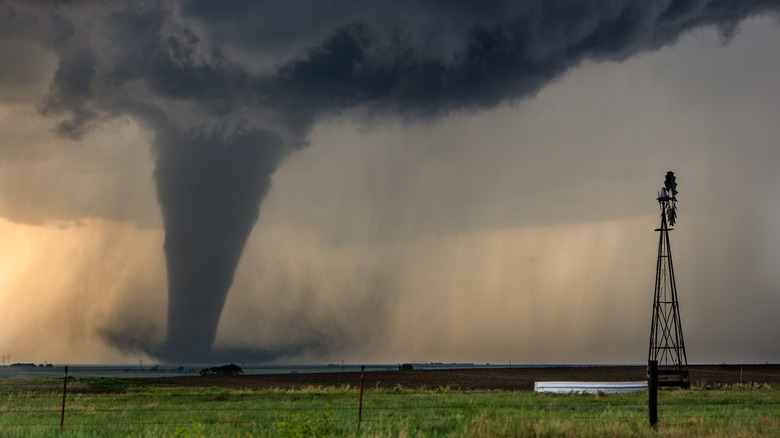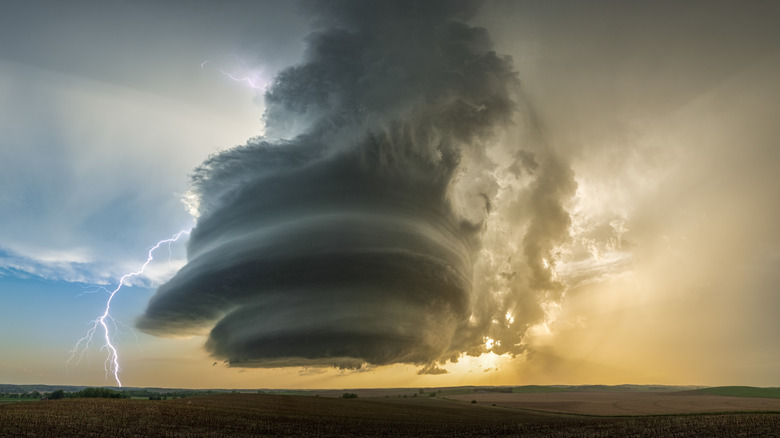Why Kansas Has So Many Tornadoes
The state of Kansas will forever be known for tornadoes thanks to The Wizard of Oz, although in reality, a twister would most likely flatten poor Dorothy's house rather than take her on a ride. Though outlandish to say the least, flying by tornado might just be the most American transportation system ever conceived, after all, the United States sees more tornadoes than any other country on Earth, averaging around 1,200 per year since record keeping began. Kansas alone averaged 81 annual tornadoes between 1994 and 2023, although according to the National Weather Service, that's only second place among the states. Texas gets the most tornadoes of all, averaging 135 per year in the same time span.
Both Texas and Kansas are located in "Tornado Alley," a strip of land smack dab in the middle of the country, extending from South Dakota down to central Texas, with Kansas at the center. This region has endured the most notorious tornadoes in history, in which hundreds of lives and thousands of homes have been lost. Facing the impacts of tornado damage is an inevitable part of life in Tornado Alley due to the region's unique geography. The flat landscape creates a free-flowing channel for both cold air moving southward from Canada and warm air moving northward from the Gulf of Mexico. When these forces collide, the results can be catastrophic.
Kansas has the perfect conditions for tornadoes to form
It takes a very particular set of conditions for a tornado to form, and Kansas and its fellow Tornado Alley states check off all the right boxes. The main ingredient needed for a tornado is a thunderstorm, specifically, a supercell thunderstorm. Supercells form when there is a very tall cumulonimbus storm cloud, and the winds near the top of the storm cloud are moving in a different direction than the winds on the bottom near the ground.
The resulting wind shear forces the storm to spin rapidly, generating winds that are much faster than the wind speed of an average thunderstorm. As a supercell spins faster and faster, the storm cloud begins to spiral downwards, like water swirling down the drain. This creates a pointy extension called a funnel cloud, and if it reaches all the way down to the ground, it becomes a tornado.
Kansas happens to lie right at the point where three opposing winds collide. Warm, dry air from the Mexican desert moves northeastward, wet air from the Gulf of Mexico moves northwestwards, and cold air from Canada drifts southwards. The Rocky Mountains provide a wall that channels these winds straight through Tornado Alley, where a jet stream running east to west whips them all into a frenzy. This creates a literal perfect storm of conditions for supercell thunderstorms and tornadoes.

